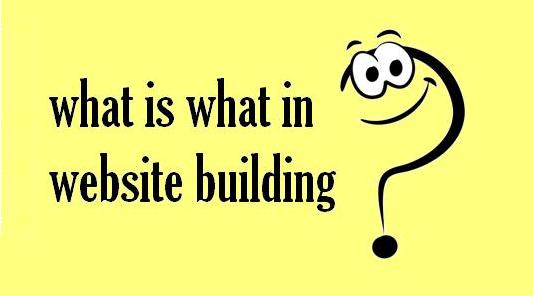
 How websites work? A website is like a living organism. Like the living organism, the website functions well when all of the parts work in tandem with one another. Remove one part, and the website fails to function at all or can’t work to its full capacity.
How websites work? A website is like a living organism. Like the living organism, the website functions well when all of the parts work in tandem with one another. Remove one part, and the website fails to function at all or can’t work to its full capacity.
How websites work
Below, see a wonderful explanation of how websites work. Your excursion into the world of websites goes on with a beautiful and smart Natalie from Bluehost. In a clear, awesome and quick way, Natalie explains how a website works and guides you through the basics that make websites work. Discover what websites are made of, where they are stored, what makes them up and running and how you can view websites on your PC. Thank you Bluehost for helpful presentation!
[youtube=http://www.youtube.com/watch?v=D8c4JZW73cM&w=560&h=315]What makes websites work
A website is a collection of web pages linked together and containing graphics, images, articles and many other website elements stored in a folder on a host server. A web page is a text file that contains code written by web programmers and viewed by a web browser. The web server is a computer dedicated specifically to host websites. The website folder has an internet address (URL) and when a browser asks for the website it will know where to find it. Any website has a home page (main page, starting page) that contains hyperlinks to other pages of the site, so the visitor can move and navigate around the website content.
The lifeblood of the website is made up from several hugely important elements: the browser, the domain name, the hosting, the server, HTML/PHP/CSS, CMS, the content.
Web Browser
Web browser is a software application developed to retrieve and display information resources on the web. Browsers access information provided by web servers and present the web page on the screen of your PC. The widely used modern web browsers are Google Chrome, Firefox, Internet Explorer, Opera, Safari.
Web Server
Web server is a remote computer and application developed to deliver web content that can be accessed through the Internet and respond to a browser’s request for a web page. The primary role of web servers is to host websites. To host your website you have to pay for a server space. The web server delivers web pages on the request of Web browser using the Hypertext Transfer Protocol (HTTP). This means delivery of HTML docs with the content and information (images, style sheets, scripts, texts, etc).
Domain Name
Domain name is an online identity of the website. A website’s domain is a website address on the web, like wikiwebpedia.com. Millions of domain names are registered every day. The domain name is a unique alphanumeric name that consists of English letters, numbers 0-9, and hyphens (-). Every domain name has a suffix or extension that indicates which type of organization or country it belongs. You can purchase a domain and server space from different companies or from the same company.
Web Hosting
Web hosting gives a website online space and allows making the website accessible on the internet 24 hours a day, 365 days a year. Web hosts are companies that provide internet connectivity and space on a server they own. You have to provide the website files to the web host for storage and publication on the Internet. When a user enters your domain name into their browser, your website is loaded from your web hosting.
HTML/PHP/CSS
HTML (Hyper Text Markup Language) is a computer language that describes how a page should be formatted. Most websites are written in HTML. After you create an HTML file, you can upload it to a web server, where any computer with a web browser and an Internet connection can access it.
CSS (Cascading Style Sheets) is a style sheet language used to style web pages written in web design languages HTML and XHTML. Most modern-day websites use CSS that is like the design of an entire website. To make changes in the design, you do not have to can change every website page, you just can change the CSS only once and the whole website will follow your changes. Let’s say your organization decides to change its logo, and you want to update the website’s color palette to match the change. Rather than editing every page, you could make the change only once, on your style sheet.
PHP has proven to be a reliable foundation for a successful modern website. PHP is currently the most popular web programming language used to write dynamic websites. Websites like Wikipedia, Yahoo!, Digg, Flickr, Delicious, Facebook are powered by PHP. PHP technology is one of the pillars the modern web application development relies on.
Content Management System
Content Management System (CMS) is an essential software equipped with options and features for website content administration. When you enter content into your CMS, the system translates the content into code to be displayed by the browser on the screen of the PC. CMS allows to update website content, build new menus, manage navigation functions according to the website visitor’s needs. Having the right content management system gives an absolute control over the website. Modern CMS platforms are easy to manage and equipped with many add-ons for various types of content.
Web Page Content
Content is everything you see and use on a web page and website, including graphics, logos, images, texts, etc. The content and information is why people come to this or that website. Web pages content should be unique, beneficial for users, well-organized, link-wise, keyword-smart, and fresh. Relevant and good content engages target audience, builds user trust and increases website prominence on top search engines.
Now you know the basics of how websites work and how your own future website will work!




